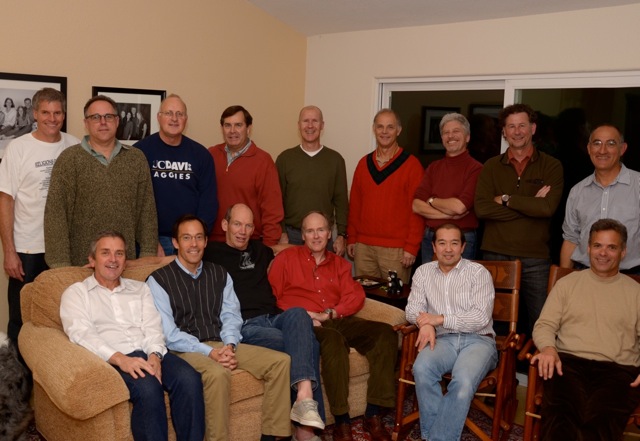Dinner and Acknowledgments
April's book selection took us back to 1921 and told us, in unsparing detail, what lay at the end of the Trail of Tears for the Osage Nation. As our host last Tuesday, Peter had to devise a menu that referenced, without trivializing, the subject matter of The Killers of the Flower Moon. Our consensus: his fry bread tacos were the perfect accompaniment to our book.
Now common to Native American tribes throughout the southwest, fry bread was concocted by the Navajo during their forced relocation to New Mexico. The Navajo used the only ingredients offered by the US government (flour, salt, lard) to sustain them on land too poor to grow their traditional foods. Fry bread tacos later became part of the southwestern indigenous cultures that spanned the border with Mexico. (Note: no big beautiful wall then existed.)
Preceding the fry bread tacos was a tasty Three Sisters Stew, another Indian recipe and an overt reference to the three Osage sisters whose murders open Grann's story. Dessert was a bowl of strawberries and brownies topped with vanilla ice cream. Delicious, yes. Subtle, no. No one missed the symbolism of white over red and brown. Well done, Peter!
Our Review and Discussion of The Killers of the Flower Moon by David Grann
Thanks to the popularity of The Killers of the Flower Moon, Grann has successfully reminded Americans of a painful, long-forgotten chapter in American history. During the decade following World War I, two notable events occurred on the Osage reservation in Oklahoma: the discovery of large deposits of oil made the Osage enormously wealthy, and a series of Osage homicides began and persisted with the connivance of local authorities. Grann's non-fiction account sifts through trial transcripts, newspaper articles, first-person accounts, and other primary sources to re-tell the disturbing story of how prominent whites not only exploited the Osage but--to bypass the "headrights" of the Osage--also killed them.
Grann also describes how the then-named Bureau of Investigation was called in to find the killers after the efforts of the county prosecutor and state attorney general were deemed corrupt by the Osage and others. The personal involvement of J. Edgar Hoover and the convictions obtained by his agents and federal prosecutors are the climax of Grann's narrative.
Despite our differences, we all found the story of the Osage fascinating. We were, to a man, appalled by the treatment of the Osage by otherwise upstanding white citizens. At every opportunity, the white establishment stole the wealth and dignity of a tribe that was, by the 1920's, greatly reduced in population and forced to survive on land whose spectacular oil wealth had already begun to diminish by the time the FBI concluded its investigation. As Peter noted, Grann's book takes direct aim at the myth of American exceptionalism. And, as Larry and Dean pointed out, the suffering of the Osage was the logical result of the westward expansion foretold in Undaunted Courage.
Our Rating of The Killers of the Flower Moon
While The Killers of the Flower Moon features a compelling story, many of us faulted Grann for trying too hard. After selling us on the shocking killings that rocked the Osage Nation, Grann then tries to convince us that Hoover's legacy and today's FBI were both forged in the crucible of the ensuing investigation. (They weren't.) If that weren't enough, he devotes the final pages of his narrative to his own investigation in which he purports to discover innumerable additional victims along with suspects never charged in their deaths. (We weren't persuaded, as the sources he relies on had already made similar claims.) Partly for these reasons, and partly to revoke Grann's poetic license (Paul and I complained about his occasional, awkward lyricism), we pulled back from a stronger rating and awarded Grann a still-healthy 7.3.
Next Up: Lake Success by Gary Shteyngart
For May, Roy offered us The Overstory by Richard Powers, The Signal and the Noise by Nate Silver, Rules of Civility of Amor Towles, and Lake Success by Gary Shteyngart. In the end, Roy's desire to reprise Shteyngart (after our enjoyment reading Super Sad True Love Story) broke a tie with The Overstory. We will see if Shteyngart's latest novel about Wall Street hubris lives up to his growing reputation as an American satirist.
May 4, 2019
Subscribe to:
Posts (Atom)

